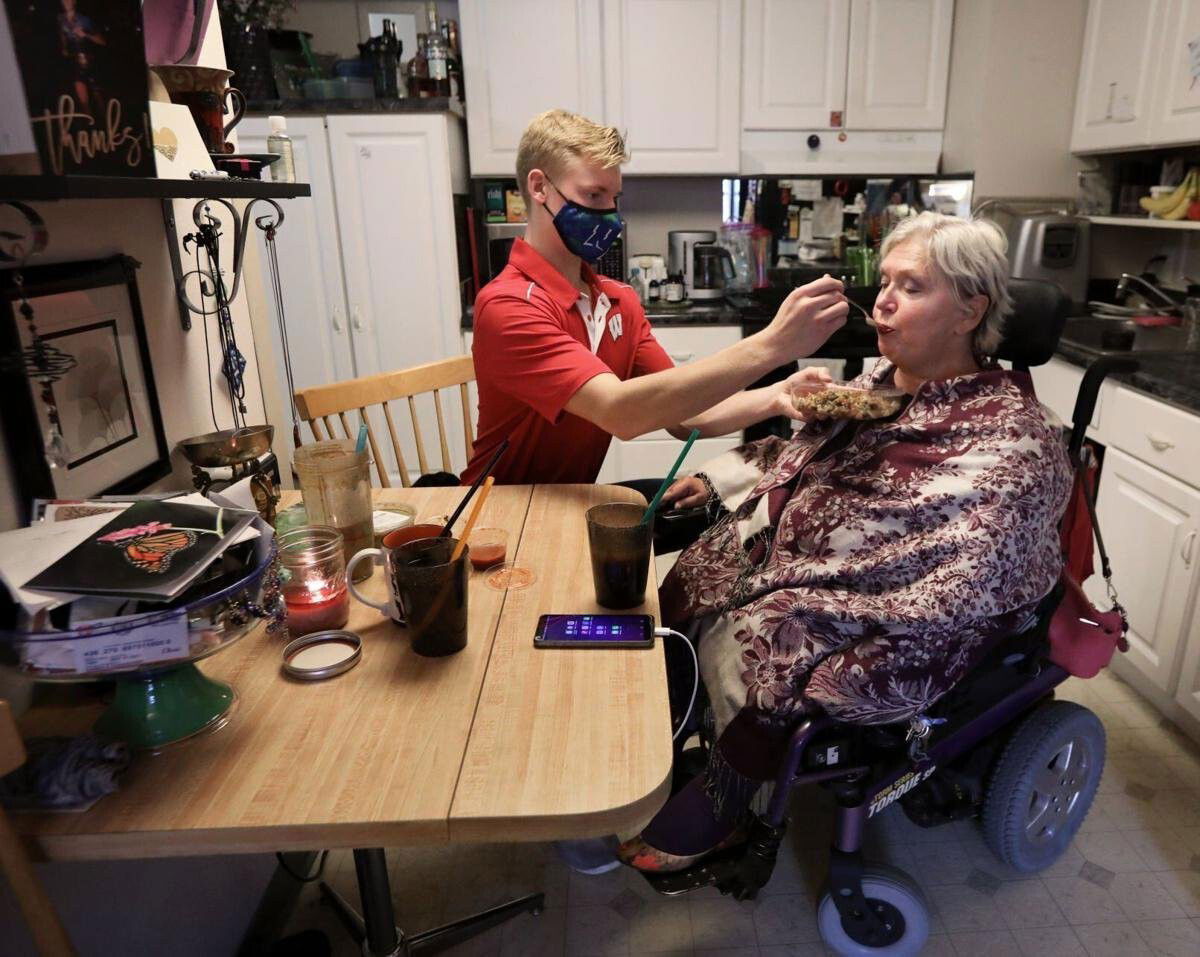Treatment for muscle weakening condition has mixed results

Personal care worker Andrew Wolfram (left) helps Karen Foxgrover eat lunch at her Downtown Madison apartment. Foxgrover
By David Wahlberg
Click here for updates on this story
MADISON, Wisconsin (madison.com/Wisconsin State Journal) — Karen Foxgrover relies on personal care workers to help her eat, go to the bathroom and get dressed. She hoped a new medication for spinal muscular atrophy would give her enough strength to live more independently.
But after swallowing the fruity liquid, called Evrysdi, daily for five months, she’s not sure if it has helped with the muscle-weakening condition. She struggles to find enough workers to help her get by day to day.
“I don’t feel like I’m getting any weaker,” the 64-year-old from Madison said. “But I don’t feel like I’m getting significantly stronger. … I don’t think I’ve noticed any difference.”
Evrysdi, approved last year for SMA patients 2 months and older, is one of two treatments available for adults with SMA. The other, Spinraza, a spinal injection given three times a year, was approved five years ago.
There are four main types of SMA. Type 1, the most common and most severe, is usually diagnosed within the first few months of life and is typically fatal by age 2 if not treated. People with type 2, diagnosed between 6 months and 2 years, and type 3, diagnosed as late as the teen years, generally can move or walk in childhood but eventually need wheelchairs. Type 4, or adult-onset SMA, is very rare.
Tyler Engel, 32, a Madison man who has type 2 SMA, has been taking Evrysdi for a year. His strength has remained about the same, but he doesn’t get tired as quickly as he previously did doing activities like wheelchair soccer, he said.
He hopes the drug will allow him to maintain the strength he still has. “It’s life-changing knowing this is the worst-case scenario that I think I’m going to be in,” Engel said.
Foxgrover, who has type 3 SMA, moved to Madison in 1982 after graduating from UW-Whitewater with a business degree. She was born and raised in Appleton.
She walked with difficulty as a young child, on the sides of her feet, quickly growing tired from the exertion, she said. By fifth grade, she started using a wheelchair and attending a school for children with disabilities.
Her oldest brother had what was likely SMA and died in his teens. Their other six siblings don’t have it, in line with the 25% chance that parents who are carriers will pass it on to each of their children.
When Foxgrover moved into her Capitol Centre apartment in Downtown Madison nearly 40 years ago, she was still strong enough to feed herself and transfer herself from her wheelchair to the toilet and the shower.
The disease eventually left her unable to use her arms and reliant on regular help.
“It’s just so obvious how much I’ve lost,” she said. With Evrysdi, “I was hoping I could get some muscles back … but I think I’m a little too old for it.”
Please note: This content carries a strict local market embargo. If you share the same market as the contributor of this article, you may not use it on any platform.
